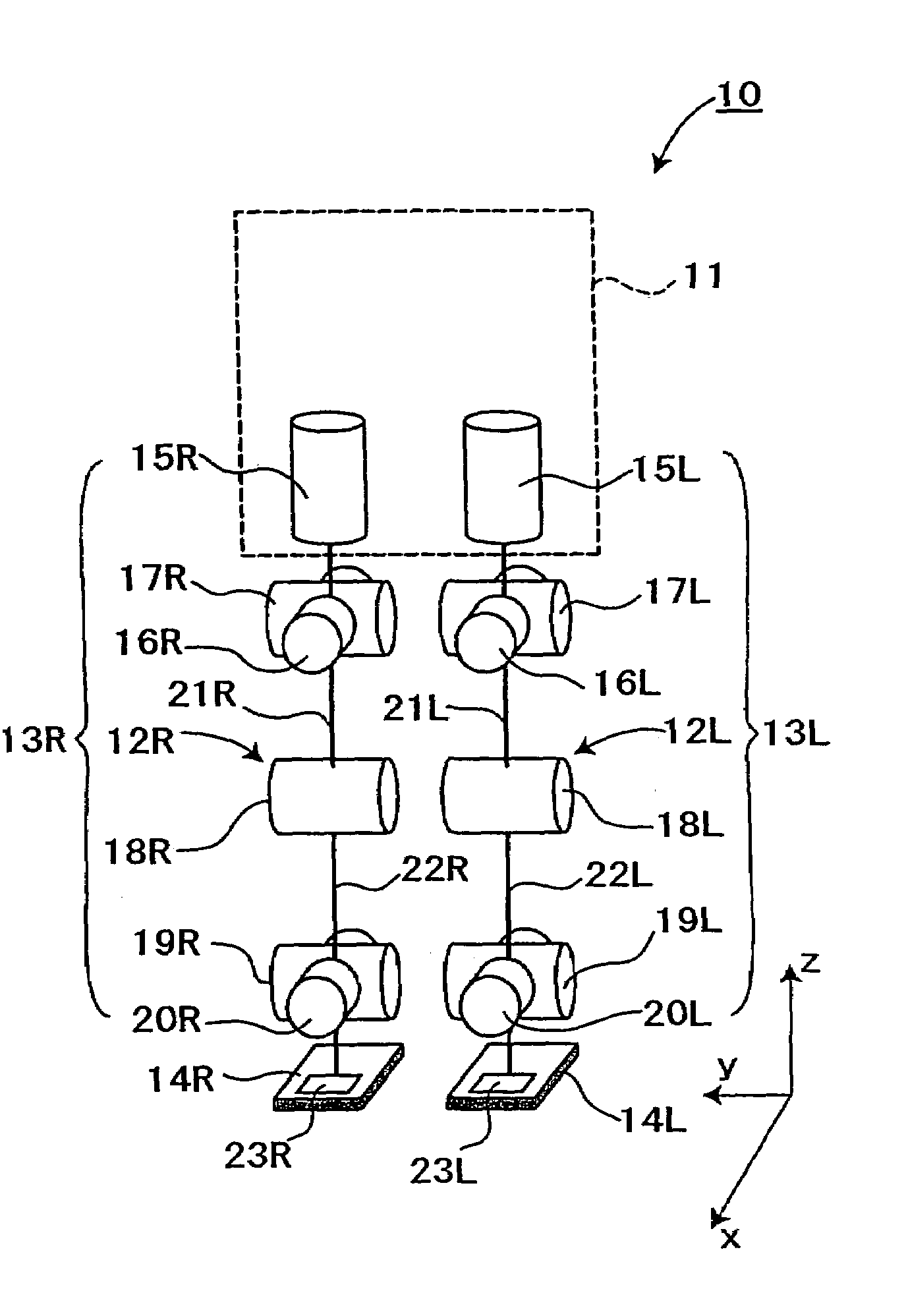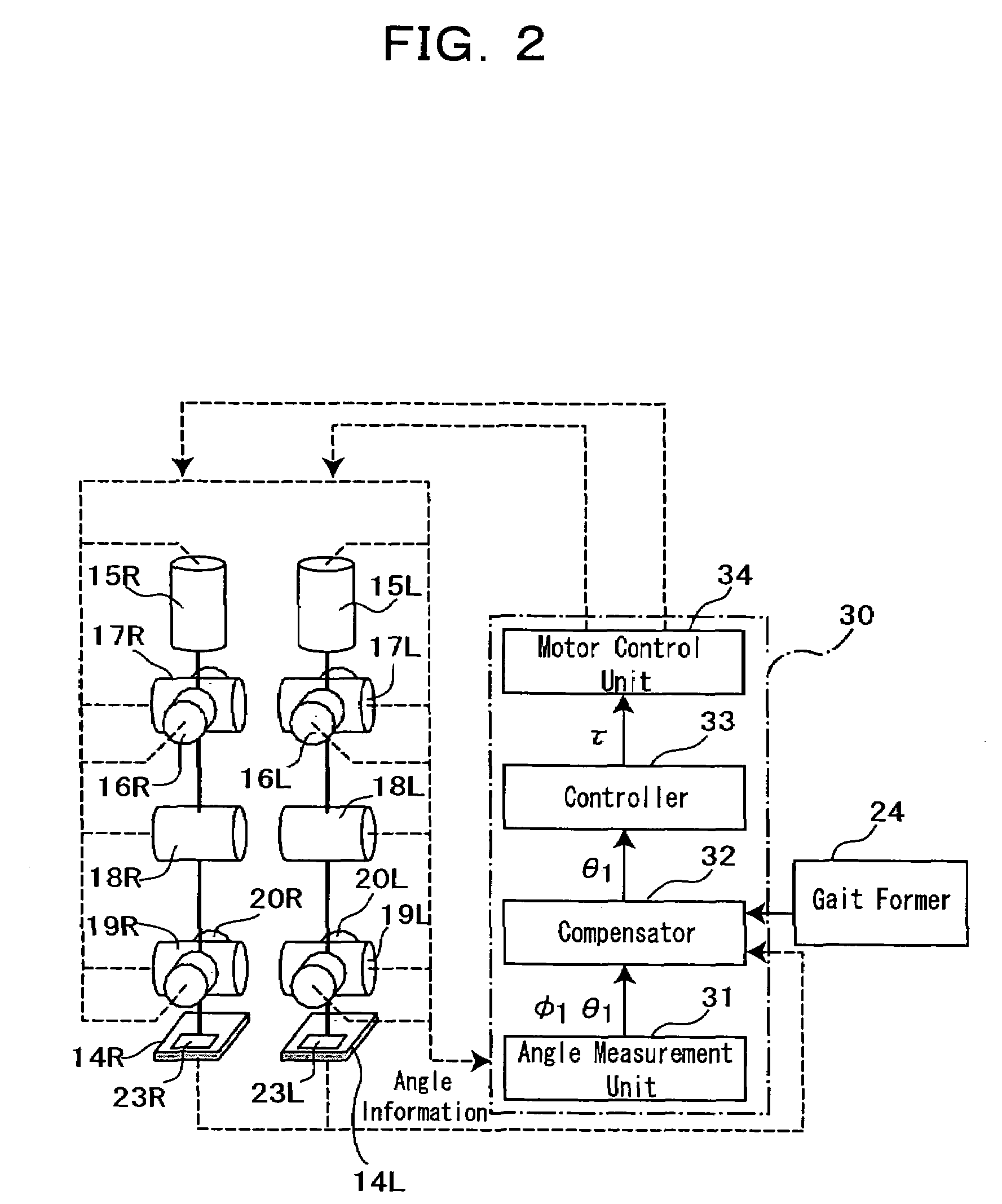Two-legged walding locomotion apparatus and its walking controller
a locomotion apparatus and controller technology, applied in manipulators, instruments, computing, etc., can solve the problems of inability to accurately conduct zmp compensation, robots may fall down with collapsed walking posture, and the inability to walk with bifocals
- Summary
- Abstract
- Description
- Claims
- Application Information
AI Technical Summary
Benefits of technology
Problems solved by technology
Method used
Image
Examples
Embodiment Construction
[0035]Hereinafter, the present invention will be described in detail with reference to suitable forms of embodiment thereof illustrated in the figures.
[0036]FIG. 1 and FIG. 2 show the makeup of an embodiment of a biped walking robot with a biped walking mobile system applied thereto in accordance with the present invention. Referring to FIG. 1, a biped walking robot 10 includes an upper body 11 as a main body having at both sides of its lower part a pair of leg portions 13L and 13R attached thereto, each of the leg portions having a knee portion 12L, 12R in its midway, and a foot portion 14L, 14R at its lower end.
[0037]Here, each of said leg portions 13L, 13R has six joint portions, namely in the order from above, the joint portion 15L, 15R for the leg portion rotation of a waist (around z axis) with respect to the upper body 11, the joint portion 16L, 16R for the roll direction of a waist (around x axis), the joint portion 17L, 17R for the pitch direction of a waist (around y axis)...
PUM
 Login to View More
Login to View More Abstract
Description
Claims
Application Information
 Login to View More
Login to View More - R&D
- Intellectual Property
- Life Sciences
- Materials
- Tech Scout
- Unparalleled Data Quality
- Higher Quality Content
- 60% Fewer Hallucinations
Browse by: Latest US Patents, China's latest patents, Technical Efficacy Thesaurus, Application Domain, Technology Topic, Popular Technical Reports.
© 2025 PatSnap. All rights reserved.Legal|Privacy policy|Modern Slavery Act Transparency Statement|Sitemap|About US| Contact US: help@patsnap.com



